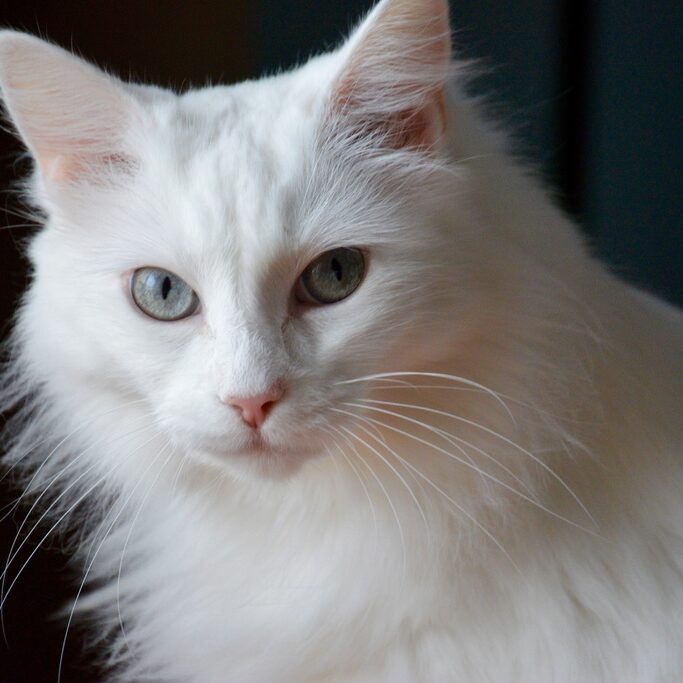
The toyger breed was created thanks to breeders in California who decided to cross Bengali cats with cats whose coat pattern was a more marked and defined tabby or mackerel, that is, with the typical stripes of tigers.
Summary
Origin and History
The Turkish Angora’s lineage can be traced back to the 15th century in the Ankara region of Turkey, where it was revered in local folklore and by royalty for its stunning white coat and elegant demeanor. The breed was brought to Europe in the 16th century, where it contributed to the development of several other longhaired breeds. Despite this, the Turkish Angora remained relatively pure, thanks to its isolated breeding pool in Turkey. The breed was nearly lost to mixed breeding in the 20th century, but dedicated breeding programs in Turkey and the importation of these cats to North America helped preserve and promote the Turkish Angora.
Physical Characteristics
Turkish Angoras are medium-sized cats with a long, slender body that exudes elegance. Their most notable feature is their luxurious, silky coat, which is most famously white, though they come in a variety of colors and patterns. The breed’s coat is single-layered, making it less prone to matting than those of other longhaired cats. Turkish Angoras have a refined bone structure, with large, almond-shaped eyes that can be blue, green, amber, or odd-colored, adding to their captivating appearance.
Personality and Temperament
Turkish Angoras are known for their energetic, playful disposition. They are highly intelligent and curious, often finding creative ways to engage with their environment and their human companions. This breed enjoys being the center of attention and can be quite vocal in expressing their needs and desires. Despite their active nature, Turkish Angoras are also affectionate and enjoy cuddling with their owners, making them excellent lap cats.
Care and Health
Turkish Angoras are generally healthy cats, but they can be predisposed to certain genetic conditions, such as hypertrophic cardiomyopathy (HCM) and deafness, particularly in white-coated individuals with blue eyes. Their silky coat requires regular grooming to prevent tangles and maintain its lustrous appearance, though their grooming needs are less demanding than those of other longhaired breeds. Regular veterinary check-ups, a balanced diet, and plenty of exercises are essential for their well-being.
Living with a Turkish Angora
Living with a Turkish Angora is a rewarding experience that brings both activity and affection into a home. They adapt well to various living environments, including families with children and other pets. Turkish Angoras enjoy interactive play and need mental stimulation to keep them entertained. Providing them with toys, climbing structures, and your companionship will keep them happy and healthy. For those seeking an elegant, intelligent, and affectionate cat, the Turkish Angora is an excellent choice.
Latest on CatOlympus
Feline Health: Debunking Myths and Unveiling Truths About Feeding Your Cat
In the realm of pet care, few topics are as riddled with myths and misconceptions as the diet of our...
Cats and Technology: Innovative Toys for Your Pet
In the era of smart living, even our feline friends can enjoy the perks of technological advancements. The fusion of...
The Reign of Cats on the Internet: An Exploration of Feline Fame
The Reign of Cats on the Internet: An Exploration of Feline Fame In the vast expanse of the internet, one...
Easy and Free Cat – Human Age Calculator
Understanding Cat Years: A Guide to Your Cat's Age in Human Years As cat lovers, we often marvel at our...













